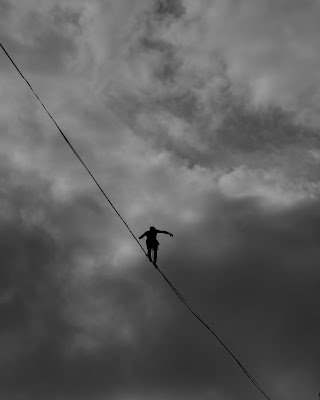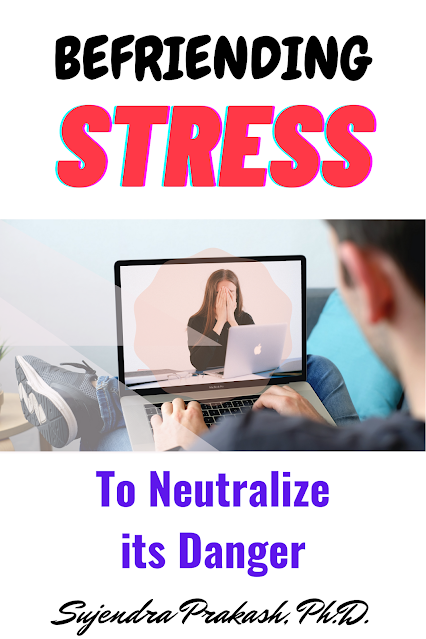 |
| Photo by Katie Hollamby from Pexels |
WHAT IS NEUSTRESS?
How long will the baby elephant sleep?
Does it know when
to wake up?
Or should we
disturb it from its blissful sleep?
How do we wake up
the baby elephant?
The baby appears so
peaceful, relaxed, and unmindful of the surroundings.
Does it mean that
the baby is happy? We don’t know because we can’t see the happiness in it. The
elephant may not experience joy because it is still sleeping.
Is the elephant
sad? We still don’t know because we can’t see the sadness in it.
Neutral Stress
Let us call this
condition “Neustress”.
The word Neustress
has been the most misunderstood term and is often ignored whenever the topic of
stress is discussed. However, this is fundamental in clarifying the myths that are
associated with stress.
This is a neutrally
stressful situation where there is no discernible disturbance whatsoever from
either within or outside. There is a kind of satiation, bliss, and contentment
that is visible to everyone. Just like we see in our baby elephant!
Three Types of Stress
Let us consider the
three types of stress we undergo every day!
Neustress (Morse
& Furst, 1979) is neutral stress, where negative emotions strike a balance
with positive emotional states in the individual.
Eustress (Selye,
1982) is a positive state of stress that leads to emotions like joy. This
stress is pleasurable.
Distress (Lazarus
& Folkman, 1984) is negative stress that is usually referred to as stress.
This stress becomes painful, and it necessitates one to take measures to reduce
the anxiety associated with it.
Stress is within us
There are many
instances where stress is misunderstood to have an origin outside ourselves.
They say climate change may be stressful, missing the bus or train is
stressful, being scolded by someone is stressful, and so on.
However, stress is
an inward reaction. How we consider the outside events, how well we are
equipped to deal with the situation outside us, as well as how can we deal with
the internal pressures and conflicts within us make up for identifying the
nature of stress.
Our motives and
emotions also play a very important role in determining the extent to which we
react or respond to situations in life.
Inviting Stress
We invite stress
into our lives because without stress we cease to be alive. Consider the baby
elephant! It looks like it is resting physically and mentally.
It is in a state of
Neustress, where anxiety or enjoyment is not noticeable. However, a significant
amount of stress is necessary for the internal organs to function. Though we
may not see it, we know that the blood is flowing throughout the body; and the
nervous system, the digestive system, etc. are all functioning to keep the
elephant alive.
These things don’t
work without stress. The resting potential we see in an organism is not a
condition of no stress, as we have assumed so far. It is a condition of
Neustress, where the right degree of changes keep happening to hormonal
functions, visceral organs, and the bodily systems.
The Balancing Act
Let us take the
example of an object. For an object to rest, it has to have the right amount of
friction and force to stay at the same place. This friction and force are the stresses
the object is having at the moment.
Consider a pivot,
for instance. The needles are resting. However, this resting state is not due
to a neither-nor situation. They are balanced because of equal force from the
opposite sides and the weight of the arrows on the pivot.

 |
| Photo by Marcelo Moreira from Pexels |
If a car has to be
parked downhill, the handbrake has to be applied. The car appears to be at rest
because it is withstanding the stress of going downhill.
 |
| Photo by Vitaliy Mitrofanenko from Pexels |
An Equilibrium
The forces are
always equal and opposite in a state of equilibrium.
So, whatever we are
doing – sitting, standing, walking, brushing teeth, sleeping, etc., we are
under stress. To engage in any activity or lack of it, we have to invite stress
so that we can effectively continue to function.
We do not do this
deliberately or consciously all the time.
The Continuum of Stress
It is often been
erroneously attributed that neutrality indicates the absence of positive and
negative forces.
Whenever we take
into account a linear continuum, neutrality is a combination of both positive
and negative forces and not their absence. Neutrality is the balance between
positive and negative forces acting upon the object or individual.
Thus, Neustress is
a balance between distress and eustress. Neustress can turn into either
eustress or distress, depending upon how the individual’s consciousness
perceives a situation. (See "Conscious Capture")
Stressful Walking
For instance, walking can be distressful if you are in a
hurry, have an injury to the leg, are tired, are not well, have to cover a long
distance, etc.
It is Neustress when you don’t even notice you are walking,
are walking with a friend, want to spend some time, go on a stroll, etc.
In case you are happy or enjoy walking in situations like
meeting your best friend and taking in the scenic beauty, then it leads to
Eustress.
Similarly, we can identify these three types of stress in
everything we do. Hence, it is not the act that is stressful, but the thought
behind the act.
Sleep Forever?
Coming back to our baby elephant, it is in a state of
Neustress where pleasure overweighs pain, not to the extent of making it happy
but to be restful. The elephant cannot sleep forever because it has to fulfill
bodily needs. It can continue to sleep until someone or something wakes it.
Then, restfulness will give rise to distress in case the
elephant had a disturbed sleep or to eustress if it had a blissful sleep.
Thus, we are always under stress, be it Distress, Eustress, or Neustress.
Next time you climb up the staircase, remember not to think negatively about how difficult it is to climb, how much time you are wasting, etc.
Your thoughts will change
your stress level!
Does Stress Make You Abnormal?
64 NAVA VIDYA or 64 NEW SKILLS
A new approach to understanding and dealing with stress.
Ebook on Befriending Stress – To Neutralize its Danger.
Highlights of the Ebook
- Unique Insight
- Neustress, Eustress, and Distress
- Pressure, Conflict, and Frustration
- Emotions and Stress
- 9 Chapters in 63 Pages
- 80 Pointers to Manage Everyday Stress
Thank you for your patience.
Please share this article with friends and relatives so that they can derive benefits from it.















Please do not include any spam links in the comment box.